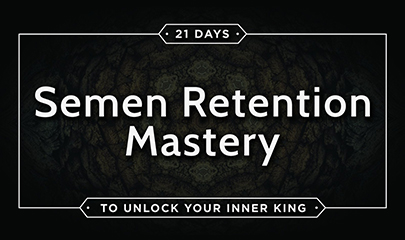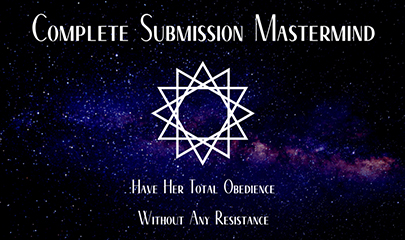The Truth by Neil Strauss
$5,00
The Truth by Neil Strauss – Digital Download!
Let’s embark on a captivating adventure to uncover remarkable insights that spark your curiosity and elevate your understanding

The Truth by Neil Strauss
Overview

The Truth by Neil Strauss
In “The Truth: An Uncomfortable Book About Relationships,” Neil Strauss takes readers on a thought-provoking journey that challenges the very nature of love, commitment, and intimacy. His narrative dives deep into the complexities surrounding modern relationships, exploring the fear and anxiety that comes with commitment, the duality of emotional connections, and the often conflicting desires we harbor. By blending autobiographical elements with broader cultural critiques, Strauss sheds light on the struggles many face when trying to navigate the labyrinthine world of love. His journey from a notorious pick-up artist to a committed partner serves as a blueprint for self-discovery, prompting readers to confront their own relationship patterns and emotional baggage. This exploration is not only about romantic connections but also about the fundamental need for self-awareness and authenticity in any partnership.
At the heart of Strauss’s narrative are the conflicting themes of security and freedom that come with commitment. On the one hand, commitment can offer a solid foundation for relationships, creating a sense of safety and trust. On the other hand, it can bring about intense fear of losing one’s freedom, particularly in a society that increasingly values individualism and personal autonomy. By examining these themes, Strauss engages in a dialogue about the very essence of love what it means to connect with another while also staying true to oneself.
Themes of Commitment
The theme of commitment serves as a central pillar in Strauss’s examination of relationships. It can be viewed as a double-edged sword, offering both security and anxiety. While commitment allows individuals to form a deeper bond and create a shared life with a partner, it can also provoke a fear of losing one’s autonomy. In this sense, commitment feels akin to a warm embrace that simultaneously constricts.
- Commitment as Security: Commitment can cultivate a nurturing environment where both partners feel safe to express themselves and invest in the relationship without fear of betrayal. This sense of stability fosters trust, enabling couples to weather storms together, build a family, and create shared memories that enrich their lives.
- Commitment as Anxiety: Conversely, the very institution that promises safety might also evoke a visceral fear of being trapped. When faced with the weight of commitment, individuals might struggle with internal conflict, oscillating between the desire for connection and the yearning for independence. This tug-of-war can lead to feelings of resentment, emotional withdrawal, and in some cases, infidelity.
- Cultural Exploration: Moreover, Strauss questions cultural narratives surrounding monogamy and lifelong commitment. Through personal anecdotes and reflections, he challenges readers to assess whether traditional frameworks are truly suitable for everyone or if exploring varied forms of commitment might lead to greater satisfaction.
- Emotional Repercussions: Finally, misunderstood commitments can result in serious emotional turmoil, leading to heartbreak and regret. Strauss emphasizes that open conversations about expectations and desires are vital in navigating these complexities.
By delving into the multifaceted nature of commitment, Strauss invites readers to redefine their own relationships and consider what commitment means to them personally, thus empowering them to make informed choices in their romantic lives.
The Dichotomy of Commitment in Relationships
The dichotomy of commitment is intricately explored throughout Strauss’s journey, revealing how it can create both bonds and barriers in relationships. At its core, commitment embodies the promise between partners to invest in each other emotionally and physically. Yet, as surface-level connections often reveal, real intimacy demands vulnerability a state many fear to embrace.
1. Commitment as a Double-Edged Sword
On one side lies the commitment that breeds security and trust. For many, the idea of pledging loyalty to one person promises stability; an anchor amidst the tempests of life. Such commitments have been shown to improve mental health and foster deeper emotional connections. For instance, studies indicate that individuals in committed relationships report higher levels of happiness and lower incidences of depression compared to their single counterparts.
2. Commitment as a Source of Fear
On the opposing side, commitment can incite fear of losing one’s autonomy and freedom, leading to anxiety and distrust. Strauss reflects on this through his experiences in the seduction community, where the thrill of conquests offered temporary satisfaction but ultimately left a void. Paradoxically, being in a relationship inspires fear fear of losing one’s identity or missing out on other experiences.
3. Illustrative Examples
These themes culminate in the reservations many feel about marriage, often labeled as the ultimate commitment. Research from the Institute for Family Studies reveals that individuals hesitate to fully embrace marriage due to fears of the unknown and the societal pressures that come with it.
4. The Cultural Lens
Further complicating matters is the societal perspective on relationships, wherein traditional views of commitment often clash with modern ideals of independence. Many are left grappling with the question: how can one be fully committed while still being one’s own person? This tension highlights the need for open dialogue and exploration within partnerships, allowing both individuals to express their fears and desires without judgment.
Through this dichotomy, Strauss stimulates critical thought about what commitment can truly mean in a contemporary context, ultimately encouraging readers to forge connections that honor both love and individuality.
Consequences of Misunderstood Commitment
Misunderstandings surrounding commitment can result in profound emotional consequences that reverberate throughout relationships. Strauss emphasizes how miscommunication and a lack of clarity can lead to devastating misunderstandings, impacting both individual well-being and relational health.
1. Emotional Turmoil
When commitment is misunderstood, it can lead to a range of emotional issues, including heartbreak and regret. For instance, a partner’s fear of commitment may cause the other to feel undervalued or unworthy, igniting a cycle of insecurity.
2. Historical Context of Misunderstanding
Strauss observes that the repercussions of misunderstood commitment extend beyond personal relationships, having historical implications that can affect societal dynamics as well. Problems that arise in intimate partnerships can lead to severe consequences, as illustrated by alarming statistics linking emotional distress in relationships to broader societal issues like violence and mental health crises.
| **Issue** | **Consequences** |
| Misunderstood Commitment | Emotional distress, heartbreak |
| Fear of Commitment | Increased anxiety, dissatisfaction |
| Lack of Clarity | Communication breakdown, resentments |
3. The Role of Expectations
Many individuals enter relationships with preconceived notions about commitment, often derived from societal norms or personal history. When expectations remain unspoken, they can lead to dissatisfaction and conflict. Thus, clear communication becomes a pivotal element in nurturing healthy relationships.
4. Vulnerability and Connection
Additionally, the emotional risks associated with misunderstanding commitment can foster walls that inhibit true intimacy. Strauss encourages readers to confront their fears directly, suggesting that vulnerability the willingness to expose one’s true feelings often leads to stronger bonds and a more authentic form of commitment.
Ultimately, Strauss advocates for transparency and open discussion about desires and expectations in order to foster deeper intimacy and prevent the damaging effects of commitment-related misunderstandings.
Personal Journey and Growth
In “The Truth,” Neil Strauss offers an insightful portrayal of his personal journey and the transformative growth that arises from confronting one’s inner struggles. His narrative strikes at the essence of what it means to evolve as individuals while navigating complex relational dynamics.
1. Acknowledgment of Past Behaviors
Strauss’s story is rooted in self-examination and acknowledgment of his patterns as a pick-up artist. Sharing candid reflections on how his past behaviors shaped his approach to love and intimacy, he highlights the necessity of self-awareness in facilitating growth. This often uncomfortable reflection, where he examines his motivations for chasing fleeting connections, serves as a catalyst for change.
2. The Process of Self-Discovery
As Strauss ventures deeper into his personal exploration, he uncovers that many of his issues stemmed from unmet emotional needs and a lack of self-love. This revelation prompts a series of therapeutic confrontations where he learns that intimacy requires vulnerability something that had been absent in his previous relationships.
3. Emotional Healing and Intimacy
The evolution from a pick-up artist to a committed partner exemplifies the growth achieved through addressing intimacy problems directly. Strauss illustrates that by confronting his fears and learning to communicate openly, he able to forge deeper connections with his partners. This self-discovery journey ignites a profound understanding that true relationships require presenting one’s authentic self rather than maintaining facades.
4. Lessons in Vulnerability
In unraveling the complexities of intimacy, Strauss emphasizes the importance of vulnerability not just as an emotional tool but as a gateway to genuine connections. He advocates that loving oneself paves the way for healthier relationships as it fosters a sense of security that resonates in interactions with others.
Overall, Strauss’s exploration of his personal journey reveals how growth is a continuous process shaped by self-reflection, vulnerability, and the courage to confront one’s fears. By sharing his experiences, he encourages readers to embark on their journeys of self-discovery, ultimately emphasizing that the path to emotional health lies in understanding and acceptance.
Transformation from a Pick-Up Artist to a Committed Partner
Neil Strauss’s transformation from a notorious pick-up artist to a committed partner serves as a compelling testimony to the capacity for personal growth and emotional evolution. His journey captures the struggle between the thrill of conquest and the profound beauty of emotional intimacy.
1. Confronting the Past
Initially reveling in his prowess as a seducer, Strauss grapples with a pervasive sense of emptiness that follows each conquest. The high of attracting multiple partners gave way to the realization that superficial connections don’t fulfill deeper emotional needs.
2. The Role of Therapy
In pursuit of healing, Strauss seeks therapy to confront his sex addiction and the underlying issues related to his self-worth. Therapy becomes a turning point where he learns to unpack his emotional baggage, shedding light on the psychological roots of his behaviors and fears.
3. Understanding Intimacy
Ultimately, Strauss’s conversion journey reveals that true intimacy demands vulnerability and authenticity. He learns that in order to foster a committed relationship, he must forego manipulative tactics and instead invest in the emotional well-being of himself and his partner. This signifies a monumental shift from viewing relationships as mere conquests to recognizing their potential for deeper connections.
4. Cultivating Healthy Relationships
Through his experiences, Strauss highlights that forming a healthy partnership requires understanding one’s emotional triggers and being willing to communicate openly about needs and vulnerabilities. His transformation showcases that love is not simply about finding the right partner, but also about becoming the right person who can contribute meaningfully to a lasting relationship.
Overall, Strauss’s evolution underscores that experiencing genuine love is a journey of self-discovery, rich with insights that can redefine one’s perspective on relationships, allowing for transformative connections rooted in mutual understanding and growth.
Navigating Love Addiction and Recovery
In “The Truth,” Neil Strauss candidly explores the terrain of love addiction, dissecting its complexities and the journey toward recovery. Love addiction a term often synonymous with compulsive relationships can lead individuals to engage in patterns that compromise their emotional health and relational stability.
1. Understanding Love Addiction
Strauss reflects on his past experiences, finding himself in a cycle of seeking validation through fleeting romantic encounters. The thrill of new connections temporarily masks deeper issues, compelling him to chase after a high that ultimately leads to emotional lows. The understanding that love can be addicting changes the lens through which he views intimacy shifting from a fleeting thrill to an emotional bond that requires investment and care.
2. The Recovery Process
Navigating the recovery process demands significant introspection and action. Throughout the book, Strauss reveals how engaging with therapy helps him recognize his attachment patterns and work through the underlying trauma that influences his behaviors. This process facilitates healing and allows for the development of healthier relational dynamics, leading to deeper emotional connections.
3. Building Authentic Connections
As Strauss progresses in recovery, he learns that genuine love is built through intimacy, trust, and communication all qualities he had previously overlooked in favor of conquest. He discusses the importance of moving beyond surface-level interactions to foster relationships that are meaningful and fulfilling.
4. The Role of Self-Compassion
In addressing love addiction, Strauss emphasizes the need for self-compassion a critical component for healing. Recognizing that past behaviors stem from unresolved emotional needs allows him to break free from self-judgment and cultivate healthier self-acceptance. This transformative practice not only enables him to heal but also inspires deeper connections with his partners.
Through his exploration of love addiction and recovery, Strauss underlines the importance of understanding emotional patterns, engaging in self-reflection, and fostering communication in building healthy relationships. His journey serves as a roadmap for those grappling with similar struggles, showcasing that recovery is entirely achievable through commitment to growth and emotional well-being.
Exploration of Modern Relationships
Neil Strauss’s exploration of modern relationships in “The Truth” challenges readers to rethink conventional notions of love, commitment, and partnership. With a keen eye on the evolving landscape of romantic dynamics, he tackles critical themes such as monogamy, polyamory, and the fundamental shifts in societal expectations surrounding relationships.
1. Reexamining Monogamy
In the context of rising divorce rates and disillusionment with traditional marriages, Strauss asks: Is monogamy the best approach for everyone? Drawing on personal experiences and cultural analysis, he provides a nuanced perspective on the pressures associated with monogamous commitments.
2. Embracing Polyamory
Simultaneously, Strauss delves into the principles of polyamory having multiple consensual relationships in a bid to explore whether this lifestyle offers a more fulfilling alternative. He reflects on how polyamorous relationships challenge conventional views of exclusivity while necessitating strong communication and emotional intelligence to navigate complexities like jealousy and expectations.
3. Dynamic Relationship Models
As social norms evolve, more individuals find themselves navigating between different relationship modalities. The fluidity of human relationships, encapsulated in the ideas of anal openness and emotional honesty, becomes a dominant theme in Strauss’s narrative, encouraging readers to consider a spectrum of committed relationships outside strict definitions.
4. Societal Influence on Relationships
Strauss also uncovers how societal influences shape individual choices surrounding relationships, revealing the profound impact of cultural expectations on intimacy and autonomy. In doing so, he illustrates the importance of personal agency in determining what form of commitment best aligns with one’s values and life circumstances.
By examining these evolving dynamics, “The Truth” emphasizes that understanding one’s emotional needs and motivations is essential to fostering meaningful connections in modern relationships. Strauss encourages readers to engage in a reflective dialogue about their desires and boundaries, ultimately promoting the pursuit of relationships grounded in honesty, vulnerability, and mutual respect.
Defining Monogamy vs. Polyamory
In “The Truth,” Neil Strauss provides a compelling discussion around monogamy and polyamory, illuminating the complexities inherent in these relationship structures. By unpacking definitions, societal expectations, and personal experiences, he fosters a deeper understanding of these often-contrasting approaches to love and commitment.
1. Monogamy: Traditional Definition
Monogamy is conventionally defined as a committed relationship between two individuals with expectations of exclusivity. It often signifies emotional and sexual fidelity, forming the foundation of traditional marriages. Many cultures celebrate monogamous relationships, linking them with stability and family values.
- Pros: Emotional security, shared life goals, and societal acceptance.
- Cons: Pressure to maintain exclusivity can lead to unmet needs, emotional strain, and dissatisfaction.
2. Polyamory: A Modern Perspective
In contrast, polyamory embraces the possibility of maintaining multiple consensual and loving relationships simultaneously. Strauss emphasizes that polyamory hinges on clear communication, boundaries, and trust among all involved parties. Many view this approach as an avenue for greater emotional exploration and diverse connections.
- Pros: Opportunity for diverse emotional bonds, reduced pressure on any single relationship for fulfillment.
- Cons: Potential for managing jealousy, miscommunication, and societal stigma.
| **Aspect** | **Monogamy** | **Polyamory** |
| Definition | Exclusive partnership | Multiple committed relationships |
| Emotional Fulfillment | Stability, safety | Variety, exploration |
| Challenges | Jealousy, infidelity | Communication, boundary setting |
3. The Individual Perspective
Strauss invites readers to assess their needs as he illustrates that neither monogamy nor polyamory is inherently superior. Instead, individuals must consider which structure resonates with their values, desires, and emotional health. The power lies in self-awareness and the willingness to communicate authentic desires to partners.
4. Expanding the Dialogue
By challenging traditional norms, Strauss encourages dialogue about love, fidelity, and commitment in contemporary relationships. He advocates for a broader understanding of partnership, steering readers away from societal dictates toward a more personalized exploration of what love can entail.
Through this exploration, “The Truth” enriches the conversation about modern relationships, emphasizing that the key to fulfillment lies not only in the structure chosen but in the commitment to uphold honesty, trust, and mutual satisfaction.
Impact of Open Relationships on Trust
In “The Truth,” Neil Strauss intimately explores the nuances of open relationships, focusing on trust as a pivotal element in navigating this relational terrain. While open relationships can inspire a sense of freedom, they also introduce complexities that can challenge emotional safety and intimacy.
1. Challenging the Norm
Open relationships challenge traditional concepts of fidelity, inviting individuals to explore connections beyond a singular partner. Strauss reveals that while this can lead to exciting new experiences, it also necessitates a strong foundation of trust, honesty, and communication.
2. Jealousy and Insecurity
One of the most profound challenges in open relationships is managing jealousy and insecurity. Strauss reflects on how these feelings can surface unexpectedly, mirroring concerns often associated with monogamous partnerships. He acknowledges that human emotions are complex and can become even more fraught within non-monogamous frameworks.
3. The Role of Communication
Effective communication emerges as a central theme in cultivating trust within open relationships. Strauss emphasizes the importance of discussing boundaries, expectations, and emotional needs upfront to mitigate misunderstandings. He suggests that transparency is key to building a trusting environment, where partners can explore their desires without fear of judgment.
4. Building Authentic Connections
Ultimately, the book indicates that trust in open relationships hinges on both partners’ emotional intelligence and willingness to engage in deep conversations about fears and motivations. Strauss highlights that understanding oneself and one’s partner fosters healthier relational dynamics, paving the way for genuine connections built upon mutual respect.
Through these insights, “The Truth” illustrates how open relationships can disrupt conventional romantic frameworks while underscoring the essential role of trust in any partnership whether monogamous or non-monogamous. Strauss encourages readers to reflect on their emotional landscapes as they navigate the complexities of love.
Psychological Insights
Neil Strauss’s exploration of relationships in “The Truth” covers significant psychological insights that illuminate the dynamics of love, intimacy, and self-awareness. By diving into the factors that shape emotional connections, Strauss provides a roadmap for understanding oneself and one’s relationships.
1. The Impact of Attachment Styles
Attachment theory underscores the importance of early childhood experiences in shaping adult relationships. Strauss discusses how different attachment styles secure, anxious, avoidant affect how individuals connect emotionally. For instance, individuals with secure attachments tend to communicate and engage more healthily, while avoidant individuals may fear intimacy, hindering relational growth.
2. Emotional Triggers and Historical Context
Strikingly, Strauss emphasizes how unresolved trauma from childhood can manifest as emotional triggers in relationships. By recognizing these triggers, individuals can learn to navigate their responses and develop healthier relationships. This insight provides a framework for understanding one’s relational behaviors and creating more fulfilling connections.
3. The Role of Self-Awareness
Self-awareness is paramount in fostering healthy relationships. Strauss contends that understanding personal motivations, fears, and desires allows individuals to communicate openly with their partners. This form of emotional literacy is crucial for nurturing intimacy and support.
4. Vulnerability as a Strength
Strauss also advocates for vulnerability as a means of cultivating closeness. The willingness to share one’s true self creates an avenue for genuine connection, enriching intimate partnerships. He underscores that emotional honesty invites deeper understanding and helps build trust.
In summary, Strauss’s insights reveal that understanding psychological underpinnings enhances an individual’s relationship capabilities. By promoting self-awareness and emotional exploration, “The Truth” serves as a guiding framework for individuals seeking to strengthen and enrich their emotional landscapes.
Attachment Styles and Their Impact on Relationships
The concept of attachment styles plays a crucial role in understanding the dynamics of romantic relationships. Neil Strauss’s “The Truth” delves into how these styles, developed in childhood, profoundly influence adult intimacy and connection.
1. Secure Attachment Style
Individuals with a secure attachment style are typically comfortable with intimacy and are capable of relying on others while maintaining their autonomy. They foster healthy communication and effective conflict resolution the hallmarks of flourishing relationships.
2. Anxious-Preoccupied Attachment
Conversely, individuals with an anxious-preoccupied style often grapple with fears of abandonment, leading to clingy or overly dependent behaviors. This can create tension in relationships, as their partners may feel overwhelmed by their need for constant reassurance.
3. Dismissive-Avoidant Attachment
Individuals with a dismissive-avoidant style prioritize independence, often shying away from emotional closeness. Their reluctance to engage can result in distant relationships, marked by superficial connections lacking depth.
4. Fearful-Avoidant Attachment
This style combines elements of both anxious and avoidant attachment, leading individuals to desire closeness while simultaneously fearing it. This conflict can result in unstable relationships marked by emotional turbulence.
| **Attachment Style** | **Characteristics** | **Impact on Relationships** |
| Secure | Comfortable with intimacy, effective communication | Strong emotional bonds |
| Anxious-Preoccupied | Clingy, seeks constant reassurance | Emotional tension, fear of abandonment |
| Dismissive-Avoidant | Values independence over intimacy | Superficial bonds, fear of closeness |
| Fearful-Avoidant | Desires connection but fears it | Emotional turbulence, instability |
By understanding these attachment styles, individuals can gain insights into their relational patterns, fostering healthier connections based on emotional awareness and understanding. In “The Truth,” Strauss advocates that recognizing and addressing these styles can lead to improved communication and intimacy within partnerships.
The Connection Between Childhood Trauma and Adult Relationships
Neil Strauss’s “The Truth” intricately weaves the narrative between childhood trauma and its profound impact on adult relationships. Strauss illustrates how unresolved childhood experiences shape attachment styles, emotional responses, and tendencies in romantic settings.
1. The Legacy of Childhood Experiences
Strauss emphasizes that early relationships with caregivers significantly influence emotional development. For instance, traumatic experiences or neglect can lead to insecure attachment styles, propelling individuals into cycles of fear or avoidance in their adult relationships.
2. Emotional Patterns and Repetition
Individuals often reenact unresolved conflicts from their past within their romantic relationships. Strauss notes that these patterns can create emotional barriers, adversely affecting one’s ability to connect meaningfully. For example, someone who experienced neglect may struggle to trust partners, fearing abandonment even in healthy relationships.
3. Healing from the Past
The healing journey begins with acknowledging and addressing the roots of trauma. Strauss reflects on his path of self-discovery, advocating for personal assessments and therapy to navigate these emotional landscapes. Engaging with one’s past can help individuals understand their responses and develop healthier relationship dynamics.
4. The Importance of Self-Reflection
Self-reflection is guided by continual learning and growth. By confronting personal traumas and emotional imprints, Strauss encourages readers to embrace vulnerability, allowing space for healing and deeper connections.
In “The Truth,” Strauss articulates the significance of understanding the link between childhood experiences and present relational behaviors, fostering awareness as a means for cultivating emotional health and stability within partnerships.
Relationship Dynamics
Neil Strauss’s “The Truth” explores the intricate dynamics of relationships, illustrating how personal histories, communication styles, and emotional patterns intertwine in shaping relational experiences. Through his journey of understanding, he underscores critical themes that resonate with anyone navigating the complexities of love.
1. The Interplay of Personal History
The narrative emphasizes how personal experiences greatly inform relationship dynamics. Strauss reflects on his patterns as a pick-up artist and their detrimental effects on intimate connections. Through this lens, he highlights the importance of self-awareness in recognizing behavioral patterns rooted in past experiences.
2. The Role of Communication
Effective communication emerges as a cornerstone of healthy relationships. Strauss advocates for openness, emphasizing that discussing feelings, desires, and insecurities creates pathways for emotional intimacy. Partners who engage in regular communication often experience stronger bonds and greater understanding.
3. Emotional Patterns and Responses
Additionally, the book examines how emotional triggers can disrupt relationship harmony. When faced with perceived threats or emotional challenges, individuals may revert to defense mechanisms such as withdrawal or aggression which can lead to misunderstandings and conflict.
4. Navigating Conflict
Strauss also highlights the importance of navigating conflict constructively. By approaching disagreements with a willingness to listen and communicate effectively, partners can strengthen their emotional ties and resolve challenges more comprehensively.
Through these themes and insights, “The Truth” captures the nuances of relationship dynamics, reinforcing that emotional awareness, effective communication, and self-reflection are paramount for fostering resilient and healthy partnerships.
The Role of Communication in Healthy Relationships
Neil Strauss’s explorations in “The Truth” underscore the pivotal role of communication in cultivating healthy relationships. It serves as the bedrock for emotional intimacy, understanding, and connection between partners.
1. Effective Expression
Healthy relationships thrive on open and honest dialogue. Strauss posits that the ability to articulate thoughts and feelings without fear can create a profound sense of connection. When partners openly communicate their needs and vulnerabilities, they lay the foundation for trust and intimacy.
2. Conflict Resolution
Effective communication is crucial for navigating conflicts. Strauss reflects on the tendency to avoid discussions about discomfort, leading to resentment and disconnection. By engaging in constructive conversations during difficult moments, partners can address issues collaboratively and emerge with greater understanding.
3. Vulnerability and Trust
Furthermore, vulnerability often a daunting prospect can become a natural part of communication when partners practice honesty. Strauss illustrates how sharing insecurities invites deeper connections, fostering empathy and compassion for one another’s struggles.
4. Continuous Dialogue
Maintaining an ongoing dialogue about desires, expectations, and boundaries is essential in nurturing healthy relationships. Strauss advocates that communication should not be confined to solving problems but also serve as a vehicle for ongoing emotional exploration, encouraging growth and unity.
Through these insights, “The Truth” highlights that communication is not merely a tool for discussion, but the cornerstone of relational health. It fosters a climate of understanding where partners can thrive emotionally and build meaningful connections.
Trust and Dependency: Balancing Love and Freedom
In “The Truth,” Neil Strauss delves into the intricate balance between trust and dependency within relationships, tackling the tension between love and personal freedom. His insights unveil the emotional complexities that arise in navigating these dynamics.
1. The Foundation of Trust
At the core of any thriving relationship is trust. Strauss emphasizes that trust allows partners to feel secure, enabling them to express themselves without fear of judgment. This foundational element fosters emotional safety and encourages vulnerability an essential component of intimacy.
2. The Pitfalls of Dependency
However, an over-reliance on a partner for emotional support can lead to unhealthy dependency. Strauss reflects on how individuals might seek validation solely from their partners, creating an imbalance in the relationship. This dependence can breed insecurity and resentment, undermining trust.
3. Finding Freedom
Strauss advocates for individuality within relationships. Recognizing that one’s sense of self should not be lost in partnership serves as a critical aspect of maintaining emotional balance. Healthy relationships thrive when both partners can pursue personal interests while still supporting each other’s growth.
4. Building Self-Trust
Ultimately, the key to balancing love and freedom lies in cultivating self-trust and self-awareness. Strauss encourages readers to strengthen their relationship with themselves, which can subsequently enhance their connections with others. By prioritizing self-love, partners can engage in healthier relational dynamics, allowing love to flourish without the weight of dependency.
Through these explorations, “The Truth” illuminates that balancing trust and personal freedom is essential to fostering enduring and fulfilling relationships. Strauss promotes a model of partnership where both individuals can thrive independently while maintaining emotional connections.
Lessons Learned
In “The Truth,” Neil Strauss distills several key lessons learned from his journey through the intricacies of love, commitment, and personal growth. These insights serve as a guide for readers navigating their own emotional landscapes and relational pathways.
1. The Importance of Self-Discovery
A pivotal lesson is the necessity of understanding oneself before engaging in relationships. Strauss’s exploration of his past reveals that unresolved issues can influence one’s behaviors and relational choices. Self-awareness is crucial for fostering healthy connections.
2. Communication as a Cornerstone
Effective communication emerges as a vital element throughout the narrative. Strauss emphasizes the need for open discussions where partners can express their desires, boundaries, and insecurities without fear. This practice fosters understanding and helps build stronger emotional bonds.
3. Embracing Vulnerability
Strauss highlights vulnerability as a strength rather than a weakness. By allowing oneself to be open and emotionally honest, individuals create pathways for deeper intimacy. Vulnerability allows partners to relate on a profound level, enriching their shared experiences.
4. Redefining Commitment
Moreover, Strauss challenges readers to reconsider their views on commitment. He advocates for flexibility and exploration of what commitment means in the context of their relationships. Understanding that partnership structures can vary encourages individuals to define love and commitment on their own terms.
Through these lessons, “The Truth” provides a reflective framework for readers seeking to enhance their relationships and personal growth. Strauss invites individuals to embark on their journeys of self-exploration, ultimately empowering them to cultivate more meaningful connections.
Building a Healthy Self-Relationship
In “The Truth,” Neil Strauss emphasizes the significance of nurturing a healthy self-relationship a fundamental aspect of fostering healthy intimate connections. He presents insights into cultivating self-love, emotional awareness, and personal growth.
1. Understanding Self-Relationship
Strauss begins his narrative by asserting that the relationship one has with oneself lays the groundwork for future partnerships. Engaging in self-reflection and understanding personal needs fosters a sense of identity essential for healthy connections.
2. The Process of Emptying Out
A crucial strategy he introduces is the idea of “emptying out,” which involves taking breaks from romantic engagements to focus on self-discovery. This practice allows individuals to examine motivations, triggers, and emotional responses without the distractions of relationships.
3. Filling Up with Self-Love
Following this period of reflection, Strauss emphasizes the importance of “filling up” actively working on self-esteem, self-acceptance, and emotional well-being. By addressing internal struggles, individuals prepare themselves for healthier relationships built on mutual respect.
4. Vulnerability in Self-Acceptance
Central to building a healthy self-relationship is embracing vulnerability. Recognizing and accepting one’s flaws and insecurities fosters self-compassion, which can alleviate fears associated with intimacy and connection.
Through these themes, “The Truth” encourages readers to prioritize self-love and emotional exploration, outlining a pathway for creating authentic, meaningful connections with others. Strauss’s narrative serves as a reminder that nurturing oneself is integral to cultivating healthy relationships.
Understanding Self-Love and Intimacy Issues
In “The Truth,” Neil Strauss sheds light on self-love and its critical role in addressing intimacy issues within relationships. By exploring how self-perception influences emotional connections, he provides insights for fostering healthier partnerships.
1. The Crucial Nature of Self-Love
Strauss emphasizes that self-love is foundational in developing satisfying relationships. Individuals who lack self-love may struggle with intimacy, fearing vulnerability and connection. This fear can hinder the establishment of deep emotional bonds.
2. Relating to Others with Authenticity
Addressing intimacy issues requires confronting one’s beliefs about self-worth and connection. Strauss encourages readers to reflect on their fears and insecurities, recognizing that past experiences shape their approach to intimacy. By understanding these influences, individuals can pave the way for more genuine relationships.
3. Vulnerability as a Pathway to Intimacy
The willingness to be vulnerable creates opportunities for authentic connection. Strauss shares that allowing oneself to open up emotionally not only enhances self-awareness but also fosters compassion and empathy between partners.
4. Overcoming Intimacy Barriers
Strauss highlights the importance of recognizing intimacy barriers such as defense mechanisms and attachment fears. By confronting these issues head-on and practicing self-acceptance, individuals can navigate their emotional landscapes and cultivate healthier connections.
In summary, “The Truth” emphasizes that self-love is instrumental in overcoming intimacy issues. By prioritizing emotional exploration and vulnerability, Strauss advocates for the development of fulfilling relationships grounded in mutual understanding and authentic connection.
Cultural Reflection
Neil Strauss’s “The Truth” offers a rich cultural reflection on the evolving perceptions of relationships, commitment, and love in contemporary society. Through personal narratives and societal critiques, he encourages readers to engage thoughtfully with the cultural context of their romantic lives.
1. Commitment as a Cultural Construct
Strauss tackles the concept of commitment, suggesting it is perceived differently across cultures. While some view commitment as a revered bond, others perceive it as an emotional burden. By examining these viewpoints, he invites readers to question their assumptions about commitment and how societal norms shape their beliefs.
2. The Tension between Individualism and Partnership
In modern cultures marked by individualism, many individuals oscillate between their desires for connection and the fear of dependence. Strauss illustrates this tension by recounting his own struggles between the allure of freedom and the comfort of commitment. This duality underscores a broader societal challenge as individuals seek balance in their personal and relational identities.
3. Redefining Relationship Norms
Additionally, Strauss challenges conventional views of monogamy, suggesting that culturally imposed definitions of love may not suit everyone. He reflects on the experiences of others navigating varying relationship structures, prompting discussions about the need for openness and flexibility regarding commitment.
4. The Role of Self-Discovery
Ultimately, the journey of self-discovery becomes a cultural imperative. By advocating for emotional exploration and authenticity, Strauss promotes a vision where individuals can define love and relationships on their terms, free from societal constraints.
Through these cultural reflections, “The Truth” serves as a manifesto for personal and relational authenticity. It encourages readers to challenge traditional norms, prioritize self-awareness, and engage in fulfilling emotional connections that resonate with their values and aspirations.
Perception of Relationships in Contemporary Society
Neil Strauss’s “The Truth” captures the nuanced perceptions of relationships in contemporary society, reflecting the shifting dynamics of love, commitment, and intimacy. Strauss skillfully dissects the impact of modern cultural narratives on personal experiences.
1. Romantic Relationships Under Scrutiny
As societal norms evolve, traditional romantic relationships often face increasing scrutiny. Strauss highlights the prevalence of dissatisfaction within marriages, compounded by rising divorce rates. This reflection urges readers to assess the meaning of commitment in a fast-paced, ever-changing world.
2. The Struggle for Authentic Connection
In a culture inundated with superficial interactions, many individuals find themselves grappling with loneliness and disconnection. Strauss’s emphasis on vulnerability and emotional honesty offers a counter-narrative that advocates for authentic connections, encouraging readers to confront their fears and desires.
3. Fluidity of Relationship Structures
Contemporary society also witnesses a growing acceptance of diverse relationship structures, from polyamory to open partnerships. Strauss illustrates that understanding oneself and one’s needs is vital in selecting the path that fits best. This fluidity reflects evolving perceptions around attachment, love, and communal bonds.
4. Self-Reflection as a Cultural Necessity
Ultimately, Strauss underscores the importance of self-reflection and personal growth in navigating relational dynamics. He champions becoming more attuned to one’s emotions and needs to foster healthier, more fulfilling relationships offering a roadmap for those confronted with societal pressures.
By articulating these perceptions, “The Truth” engages in a broader cultural critique, inviting readers to rethink their viewpoints on love and intimacy, and encouraging them to seek authentic connections that resonate with their own values.
Influence of Societal Norms on Personal Relationships
Neil Strauss’s “The Truth” examines how societal norms shape personal relationships, influencing individual behaviors, attachment styles, and emotional responses. His exploration reveals the intricate interplay between culture and intimacy.
1. Societal Expectations and Commitment
Societal norms dictate expectations surrounding commitment and fidelity, often creating pressure to conform to traditional relationship structures. Strauss highlights the tension individuals face when their desires to explore alternative forms of commitment clash with cultural expectations.
2. The Impact of Masculinity and Femininity
As Strauss delves into the dynamics of gender roles, he critiques how societal definitions of masculinity and femininity affect relational behaviors. By examining his journey from pick-up artist to committed partner, he sheds light on the detrimental behaviors that emerge from adhering to rigid gender roles.
3. Emotional Health and Relationship Standards
Societal expectations can also influence emotional health within relationships. Strauss argues that the pursuit of perfectionism in partnerships driven by societal ideals can lead to dissatisfaction and conflict. Recognizing these pressures allows individuals to redefine their standards for emotional fulfillment.
4. Navigating Cultural Influences
Ultimately, individuals must navigate cultural influences to foster relationships that resonate with their values. Strauss encourages readers to engage in self-exploration, empowering them to break free from societal constraints and define their paths toward intimacy and connection.
Through these analyses, “The Truth” illuminates how societal norms shape personal relationships while advocating for critical self-awareness and authenticity as pathways to building fulfilling partnerships based on mutual respect and understanding.
Critical Evaluation
In “The Truth,” Neil Strauss provides a comprehensive analysis of personal relationships through the lens of self-discovery, attachment theory, and societal influences. His insights challenge conventional narratives about love and intimacy, offering valuable reflections on the nature of commitment, vulnerability, and emotional health.
1. Personal Narrative as Insight
Strauss’s personal journey serves as a powerful vehicle for self-reflection and growth. By connecting his experiences to broader cultural themes, he effectively illustrates the intricacies of romantic dynamics, demonstrating that relational fulfillment requires understanding oneself and one’s emotional triggers.
2. Balancing Vulnerability and Defense
One of the central themes revolves around vulnerability, portraying it as an essential ingredient for healthy relationships. Strauss brilliantly navigates the tension between emotional defenses and the willingness to be open a theme that resonates deeply with many readers.
3. Cultural Critique and Reflection
Moreover, Strauss’s critique of societal norms reflects a growing recognition of the fluidity of relationships in contemporary life. He highlights the diverse forms relationships can take, positioning his narrative within a cultural context that encourages exploration and authenticity rather than rigid adherence to traditional norms.
4. Lessons for Growth
Ultimately, “The Truth” offers tangible lessons for readers seeking to enhance their relationships. By emphasizing self-awareness, communication, and the importance of self-love, Strauss equips individuals with the tools to navigate their emotional landscapes and build healthier connections.
Through this critical evaluation, “The Truth” emerges as a thought-provoking exploration of relationships, challenging readers to confront their beliefs and perspectives as they engage in their own journeys of self-discovery and growth.
Reception and Critiques of The Truth
Since its publication, Neil Strauss’s “The Truth: An Uncomfortable Book About Relationships” has received both praise and critique, sparking discussions about the nature of love and intimacy in contemporary society.
1. Honest Reflection and Growth
Many critics praise Strauss for his candid reflections on personal growth and his willingness to confront his past behaviors. By transitioning from a notorious pick-up artist to someone committed to genuine connection, Strauss resonates with readers who have undertaken similar journeys of self-discovery. Reviewers from sources like Kirkus Reviews find value in his ability to mirror individual struggles through relatable anecdotes.
2. Complex Themes of Commitment
Critics highlight how Strauss intricately navigates the complexities of commitment, challenging societal expectations regarding monogamy. His exploration of open relationships and alternative frameworks prompts discussions about the evolving definitions of partnership, making the book relevant for individuals seeking modern perspectives on love.
3. Balancing Vulnerability and Critique
Some reviewers appreciate Strauss’s balance of vulnerability and critique; the acknowledgment of emotional pitfalls and the necessity for open communication stand out as vital lessons. However, others express concerns regarding his history in the seduction community, questioning whether his insights can transcend the superficial tendencies of that space.
4. A Cultural Reflection
Concisely, “The Truth” serves as a cultural reflection on how societal norms shape personal relationships, driving a critique of traditional structures. Readers resonate with Strauss’s call for more substantial engagement with emotional landscapes, igniting conversations about how love can manifest authentically in a rapidly changing world.
Through these varied receptions, “The Truth” stirs meaningful debate around commitment, intimacy, and personal growth, establishing itself as a significant work within contemporary relationship literature.
Legacy of The Truth Among Relationship Literature
Neil Strauss’s “The Truth: An Uncomfortable Book About Relationships” has left a significant impact on the realm of relationship literature, influencing discussions about commitment, intimacy, and personal growth.
1. Redefining Relationship Conversations
The book’s legacy lies in its ability to redefine conversations surrounding relationships and commitment. Strauss challenges readers to reflect on their beliefs about loyalty and connection, encouraging them to explore various relationship structures, including monogamy and polyamory. This thematic exploration broadens the discourse around love and partnership in modern times.
2. Personal Narratives and Cultural Reflections
As a personal narrative intertwined with cultural reflections, “The Truth” exemplifies the transition from superficial engagement in romantic relationships to a deeper understanding of emotional health. By tackling issues of intimacy, vulnerability, and self-awareness, Strauss leaves readers with practical insights that can be applied in their pursuits of love and connection.
3. Creating Awareness of Attachment Styles
The book also contributes to the exploration of attachment styles, emphasizing their implications in the dynamics of adult relationships. By crystallizing the connection between childhood experiences, emotional triggers, and adult intimacy, Strauss deepens readers’ understanding of relational patterns and their roots.
4. A Call for Authenticity and Growth
Ultimately, “The Truth” champions the necessity for authenticity and self-discovery in forming meaningful relationships, democratizing the discourse around love and intimacy. Strauss’s narrative resonates across diverse audiences, encouraging reflection and personal growth.
In summary, the legacy of “The Truth” is characterised by its ability to inspire critical thinking about relationships, pushing readers toward self-awareness and emotional exploration as pathways to deeper connections.
Conclusion
In “The Truth: An Uncomfortable Book About Relationships,” Neil Strauss embarks on a transformative journey that challenges readers to confront their beliefs about love, commitment, and intimacy. Through candid reflections and personal anecdotes, Strauss exposes the intricate interplay between societal norms, personal histories, and emotional dynamics within relationships.
His exploration extends beyond the surface, delving into the psychological underpinnings of attachment styles and the impact of childhood trauma on adult relationships. By addressing issues of love addiction and self-love, Strauss illuminates the necessity of engaging in self-discovery as a prerequisite for fostering genuine connections.
Facing the dichotomy of commitment, readers are encouraged to assess their relationship patterns and redefine their understanding of partnership. Whether grappling with monogamy or exploring alternative forms of connection like polyamory, Strauss advocates for open communication, vulnerability, and trust as essential components of any relationship.
Moreover, “The Truth” expands the dialogue around modern relationships, prompting critical reflections on how cultural influences shape individual dreams about love and connection. It champions individuality and flexibility in navigating partnerships, echoing the need for authenticity and emotional health as cornerstones of meaningful relationships.
As readers traverse Strauss’s journey, they are encouraged not only to reflect on their own experiences but also to embrace the complexities of love in all its forms. Through his candid discussions and profound insights, “The Truth” serves as a guiding light for those seeking understanding, growth, and deeper connections in the ever-evolving landscape of relationships.
Frequently Asked Questions:
Innovation in Business Models: We use a group purchase approach that enables users to split expenses and get discounted access to well-liked courses. Despite worries regarding distribution strategies from content creators, this strategy helps people with low incomes.
Legal Aspects to Take into Account: Our operations’ legality entails several intricate considerations. There are no explicit resale restrictions mentioned at the time of purchase, even though we do not have the course developers’ express consent to redistribute their content. This uncertainty gives us the chance to offer reasonably priced instructional materials.
Quality Control: We make certain that every course resource we buy is the exact same as what the authors themselves provide. It’s crucial to realize, nevertheless, that we are not authorized suppliers. Therefore, the following are not included in our offerings: – Live coaching sessions or calls with the course author.
– Entry to groups or portals that are only available to authors.
– Participation in closed forums.
– Straightforward email assistance from the writer or their group.
Our goal is to lower the barrier to education by providing these courses on our own, without the official channels’ premium services. We value your comprehension of our distinct methodology.
Be the first to review “The Truth by Neil Strauss” Cancel reply
You must be logged in to post a review.

 Radical Approaches to Social Skills Training (Psychology Revivals) by Peter Trower
Radical Approaches to Social Skills Training (Psychology Revivals) by Peter Trower 

















Reviews
There are no reviews yet.